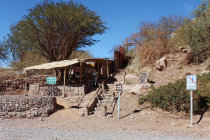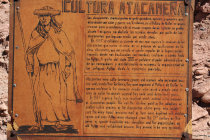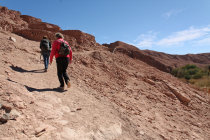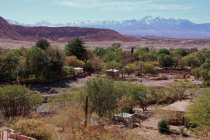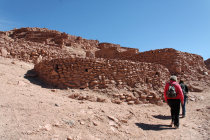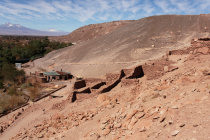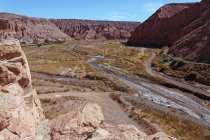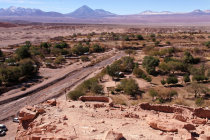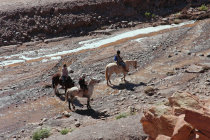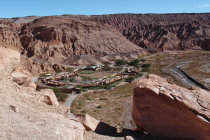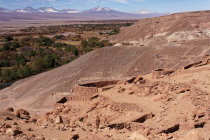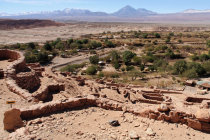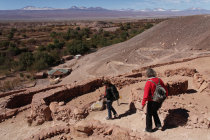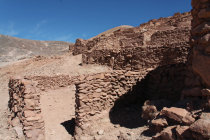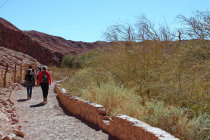Pukara de Quitor are the remains of a fort on the steep Quitor hill that dominates a bend in the San Pedro River just north
of San Pedro de Atacama.
Since ancient times people have used the Quitor hill as defensive position against the Aymara tribes in
the north.
In the 12th century the locals (called Ayllu de Quitor) fortified the lower perimeter of the hill with a defensive
wall, creating a refuge with houses, stables, and storage rooms.
Spanish conquistadors tried for many years to bring San Pedro
and the other villages in the Salar de Atacama under their control.
In 1540 they laid siege to the Pukara and pounded it with canon
fire. After a bloody battle they defeated the resilient local defenders.
After the battle the heads of 300 killed Ayllus were impaled
on stakes and since then the Pukara is locally known as the Castle of the Heads.
The site became a National Monument
in 1982.
We climbed the 80 meters high Pukara de Quitor in August 2011 and enjoyed the nice panoramic views.




